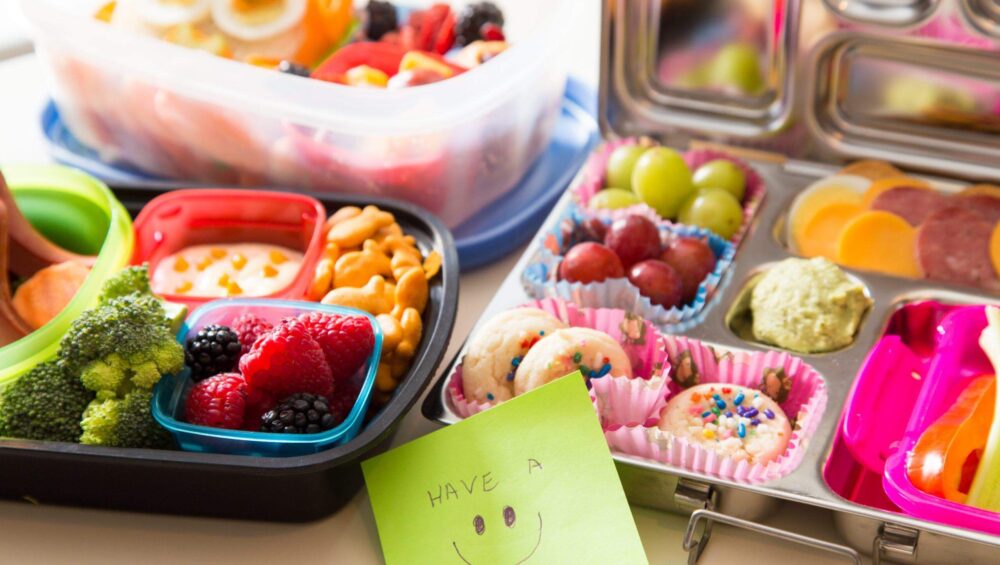The lunchbox is a source of frustration for parents and a delight for children. It’s an ongoing negotiation about what to pack (and how much) that can be stressful and time-consuming. But it doesn’t have to be! We asked parents around the country what they do in the lunchbox wars, and here are some of their best tips.
Use a bento box
A bento box is a compartmentalized lunch container that’s used for packing all sorts of foods. They’re usually made from plastic, silicone or stainless steel, and can be found at most stores that sell kitchenware. This makes them perfect for packing lunches because you can prepare the individual components in advance (think: chop some veggies and cook some chicken) and then pack them separately into a single reusable container in the morning. Once your child gets to school, it’s easy to just grab one of the pre-made compartments for their meal!
Put ice packs on both sides of the lunchbox
Putting an ice pack will keep the food cool and crisp, rather than squished or crushed. It also helps to keep food from getting soggy if you’re bringing something moist like soup or stew that needs to be kept cold. Ice packs can be bought at most stores that sell school supplies, but they’re also pretty easy to make yourself out of frozen water bottles and zip-top bags.
Buy a leak-proof container set
Don’t forget to buy a leak-proof container set. This will be the most important thing you ever do for your kid’s lunch box, so make sure it’s top-notch. Get a container set that has plenty of different sizes and shapes, so you can pack anything from yogurt and applesauce to soup and beans. It needs to be easy to clean, too (we don’t want moldy containers ruining our lunches). Read reviews online or ask friends what they recommend—you’ll find there are many options available in stores as well as online shopping sites like Amazon Prime Now or Jet.
If you don’t have time to shop around for suitable containers or if your budget is tight, no worries! You can use any container with some extra space at the bottom (like small yogurt cups) or even just reuse old plastic food storage bags from home—just make sure they’re not leaking before you put them in your child’s lunch bag!
Pack fruits in a thermos to keep them cold
For the freshest, coldest fruit possible, try packing your fruit in a thermos. You can use any type of thermos you like, but if you want to get the most out of your lunchbox experience, we recommend one that’s BPA-free and has a wide mouth for hassle-free cleaning.
Make nutrition fun with these secret-weapon recipes
We know that packing healthy lunches isn’t always easy, especially when your little ones are more interested in playing than eating. But with these recipes, you can make school lunch fun and exciting for your kids.
Here are some of our favourite no-fail secret weapons:
- Homemade Fruit Rollups: This is one of our personal favourites! Get ready to impress yourself and your kids with this simple recipe.
- Make Your Own Turkey Meatballs: Turkey meatballs are not only super healthy but also tasty! They’re easy to make and freeze well so they’re great for leftovers too!
- Salted Caramel Popcorn Balls: These popsicles will satisfy any sweet tooth while keeping things super healthy—and they’re downright adorable.
Prepare food the night before
A great way to save time in the morning is to prepare your food the night before. Make a list of what you’re going to pack for lunch, select a variety of foods that are easy to prepare and pack (no heating required), and make sure you have all the ingredients on hand. It’s also helpful if those foods can be prepared in advance; for example, steaming vegetables instead of making them fresh each day or baking chicken breasts at night so they’re ready for packing during your commute.
For kids who are picky eaters (or who just don’t like leftovers), it’s important not just to give them choices but also options like “Do you want fries with that?” “Would you like pizza first or salad?”
Use up the leftovers
You can use your leftovers to make sandwiches or salads, quesadillas, soups and smoothies. Leftover meat, fish or chicken is great for adding to a sandwich; leftover rice, pasta or potatoes make great additions to salads; leftover vegetables are perfect for soups; leftover fruit is great for making smoothies; and leftover milk can be used in cereal.
If you have some leftover cheese from yesterday’s lunchbox creation why not grate some over a tortilla wrap with some salad leaves? This will create an easy quesadilla that your kids will love!
Label all containers with your child’s name
Labelling your child’s lunchbox with his/her name is essential, especially if you want them to go home with their food.
- Use a permanent marker and write on the container or lid.
- Use a label maker, adhesive labels (like these), or sticker paper to print out stickers for each container and lid.
- Write on the containers with a label pen like this one, which will stay sticky for years!
Get creative in your presentation
To make your lunch fun and engaging, you should be sure to use a variety of shapes and sizes. You want to make sure that the kids are excited about what they’re eating, so giving them some variety is important.
You should also consider using different containers for each meal. One day it might be a bagel with peanut butter, another day it could be a sandwich wrap or even something like pasta salad. This will help keep things interesting!





